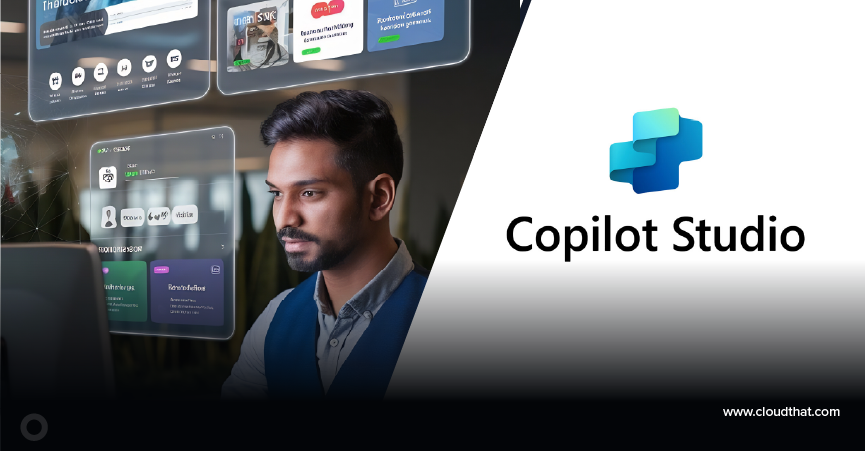|
Voiced by Amazon Polly |
Introduction
Businesses continuously explore ways to optimize their customer support systems to achieve higher efficiency, scalability, and cost-effectiveness. A promising solution involves the adoption of generative AI-powered chatbots. These advanced systems emulate human-like interactions by utilizing a knowledge base to address customer inquiries promptly. This capability allows human agents to focus on handling more complex and strategic tasks, improving overall service quality and operational efficiency without unnecessary duplication. This integration ensures that digital assistants developed with Amazon Lex and Amazon Bedrock are highly responsive, providing users with accurate and contextually relevant information.
Pioneers in Cloud Consulting & Migration Services
- Reduced infrastructural costs
- Accelerated application deployment
Introduction to Amazon Lex and Amazon Bedrock
Amazon Lex is a service designed to create conversational interfaces using voice and text, utilizing advanced natural language understanding to identify user intent and provide prompt responses accurately. It simplifies the development of sophisticated chatbots that can understand and respond to natural language queries effectively.
Amazon Bedrock facilitates the development and scaling of generative AI applications by using large language models (LLMs) and other foundational models (FMs). It offers access to various models from providers such as Anthropic Claude, AI21 Labs, Cohere, Stability AI, and Amazon’s own Titan models. Bedrock also supports Retrieval Augmented Generation (RAG), which improves AI responses by retrieving relevant information from data sources.
Solution Workflow
The solution involves several steps utilizing Amazon Lex, Amazon Simple Storage Service (Amazon S3), and Amazon Bedrock:
- User Interaction: Users interact with the chatbot through a prebuilt Amazon Lex web interface.
- Intent Recognition: Amazon Lex processes each user request to determine the intent.
- Response Generation: QnAIntent in Amazon Lex connects to an Amazon Bedrock knowledge base to fulfill user requests.
- Vectorization and Querying: Amazon Bedrock’s Knowledge Bases convert the user query into a vector using the Amazon Titan embeddings model. This vector is then used to search the knowledge base for semantically similar information. The retrieved data, combined with the user query, generates a response with an LLM.
- Response Delivery: The generated response is returned to the user through the Amazon Lex interface.
Implementation Steps
Creating a Knowledge Base in Amazon Bedrock:
- Go to the Amazon Bedrock console

2. Create a new knowledge base by providing the necessary details and selecting the Amazon S3 bucket containing your data.

3. Choose the embedding model to vectorize the documents and create a vector store with OpenSearch Serverless.


4. Choose Sync to index the documents.

Setting Up an Amazon Lex Bot
- Create a new bot in the Amazon Lex console.

2. Configure the blank bot with a name and the necessary AWS IAM roles.


3. Add utterances for the new intent to the bot.


Adding QnAIntent to the Intent:
- Use the built-in QnAIntent in Amazon Lex.

2. Configure the knowledge base connection using the knowledge base ID and select the appropriate model.

Deploying the Amazon Lex Web UI:
- Deploy the prebuilt Amazon Lex web interface using the Amazon CloudFormation template available in the GitHub repository.
- Update the LexV2BotId and LexV2BotAliasId values in the template with your bot’s details.

3. Test the chatbot through the web interface.

Conclusion
Leveraging Amazon Lex and Amazon Bedrock to develop a digital assistant offers businesses a powerful solution to enhance customer support operations. These chatbots can deliver accurate and contextually relevant responses by integrating advanced natural language understanding capabilities with large language models and retrieval-augmented generation techniques. This improves service efficiency and scalability and empowers human agents to focus on higher-value tasks. As businesses prioritize seamless customer interactions, adopting generative AI-powered chatbots proves instrumental in achieving higher customer satisfaction and operational excellence.
Drop a query if you have any questions regarding Generative AI-powered chatbots and we will get back to you quickly.
Making IT Networks Enterprise-ready – Cloud Management Services
- Accelerated cloud migration
- End-to-end view of the cloud environment
About CloudThat
CloudThat is an award-winning company and the first in India to offer cloud training and consulting services worldwide. As a Microsoft Solutions Partner, AWS Advanced Tier Training Partner, and Google Cloud Platform Partner, CloudThat has empowered over 850,000 professionals through 600+ cloud certifications winning global recognition for its training excellence including 20 MCT Trainers in Microsoft’s Global Top 100 and an impressive 12 awards in the last 8 years. CloudThat specializes in Cloud Migration, Data Platforms, DevOps, IoT, and cutting-edge technologies like Gen AI & AI/ML. It has delivered over 500 consulting projects for 250+ organizations in 30+ countries as it continues to empower professionals and enterprises to thrive in the digital-first world.
FAQs
1. What is Amazon Lex?
ANS: – Amazon Lex is a service for building conversational interfaces using voice and text. It utilizes advanced natural language understanding to interpret user intent and respond with appropriate actions or information.
2. What is Amazon Bedrock, and how does it relate to AI applications?
ANS: – Amazon Bedrock facilitates the development and scaling of AI applications, particularly generative models, by providing access to large language models (LLMs) and foundational models (FMs). It supports techniques like Retrieval Augmented Generation (RAG) to enhance AI responses.

WRITTEN BY Aayushi Khandelwal
Aayushi is a data and AIoT professional at CloudThat, specializing in generative AI technologies. She is passionate about building intelligent, data-driven solutions powered by advanced AI models. With a strong foundation in machine learning, natural language processing, and cloud services, Aayushi focuses on developing scalable systems that deliver meaningful insights and automation. Her expertise includes working with tools like Amazon Bedrock, AWS Lambda, and various open-source AI frameworks.


 Login
Login


 July 29, 2024
July 29, 2024 PREV
PREV










Comments